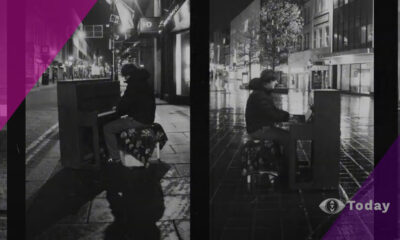A small part of every motorist wants to emulate the exhilarating feeling of a car race like those we see on the big screen.
Leaving the cinema after watching our favourite Hollywood actors testing the speedometer and chassis makes us in turn want to put the pedal to the metal. While research has been done by the American Psychological Association into the connection between audiences being exposed to risky behaviours like driving over the speed limit and other serious activities, we must admit that these races are beyond exciting to watch.
But with so many appearing on screen over the decades, some have stood the test of time and remain etched in our minds. In this article, used Audi have complied three of the most iconic car race scenes in cinema history.
“I almost had you!” – The Fast and the Furious (2001)
The Fast & Furious series has grown from being a love letter to street-racing and customised supercars to a fully-fledged adrenaline ride (pun intended) featuring the longest airport runway in cinema history and a submarine outrunning a car. In fact, the New York Times found that there was an increase of almost 20% in speeding tickets in the United States the weekend after the release of a new film in the franchise.
Here, however, we’re going back to the early 2000s and the scene that would set up the rest of the series. This race is the first in the history of Fast & Furious and features two main characters in Vin Diesel’s Dominic Toretto and the late Paul Walker as Brian O’Conner.
This race has it all, a what’s what of supercar customised within an inch of their life, including a Mazda RX-7, a Mitsubishi Eclipse, and an Acura Integra. It becomes an iconic scene as it sets up the fast-paced editing with hard cuts as the action progresses, and with Paul Walker’s line after he comes in second: “Dude, I almost had you!” That in turn leads to Vin Diesel’s incredibly quotable speech, finishing with: “Ask any racer, any real racer, it don’t matter if you win by an inch or a mile. Winning’s winning.”
Thunder Road – Grease (1978)
When it comes to musicals, very few gives us chills (that multiply) quite like Randal Kleiser’s love letter to America in the 1950’s in Grease. One of the songs that appears in every medley of the film’s soundtrack is Greased Lightning, a 1948 Ford De Luxe convertible bought by Kenickie and fixed up by the T-Birds.
This race might not be what you first think about when it comes to the film as the songs throughout almost eclipse the scenes themselves, but that doesn’t mean it’s any less important. Filmed on the iconic Los Angeles landscape of Thunder Road, the race takes place on the stretch by the LA River and the sight of the beige-grey sloping walls stirs the latent memory of the race.
What makes this scene even more interesting in the scope of the production is that it was initially created as a homage to the chariot race in Ben-Hur (1959). But when Kleiser realised what the cost of his original idea would be and how Thunder Road would give the film a bigger look on the wide lens, it has since become an image that’s so closely associated with the film.
Rush (2013)
We can’t talk about iconic races without looking at sports like F1. It has a rich history that goes back to the 1950s with stories and rivalries that translate well to film. Very few are as iconic as the rivalry between James Hunt and Niki Lauda, portrayed by Chris Hemsworth and Daniel Bruhl respectively, which is translated to the big screen in Ron Howard’s 2013 film Rush.
The film documents the intense battle between the two to be the best driver in the sport as well as Lauda’s life-changing injury due to an incident on the track, and real race footage is integrated into some of the scenes.
With the main theme of the film centring on racing, there are plenty that could be deemed to be iconic. The one that represents the most in the greater narrative of the story is when Lauda returns to race at the Italian Grand Prix after his accident. The sense of excitement that builds watching such a dedicated racer continue his passion beyond an event that could have resulted in his death encourages the audience to feel even more connected with the character.











